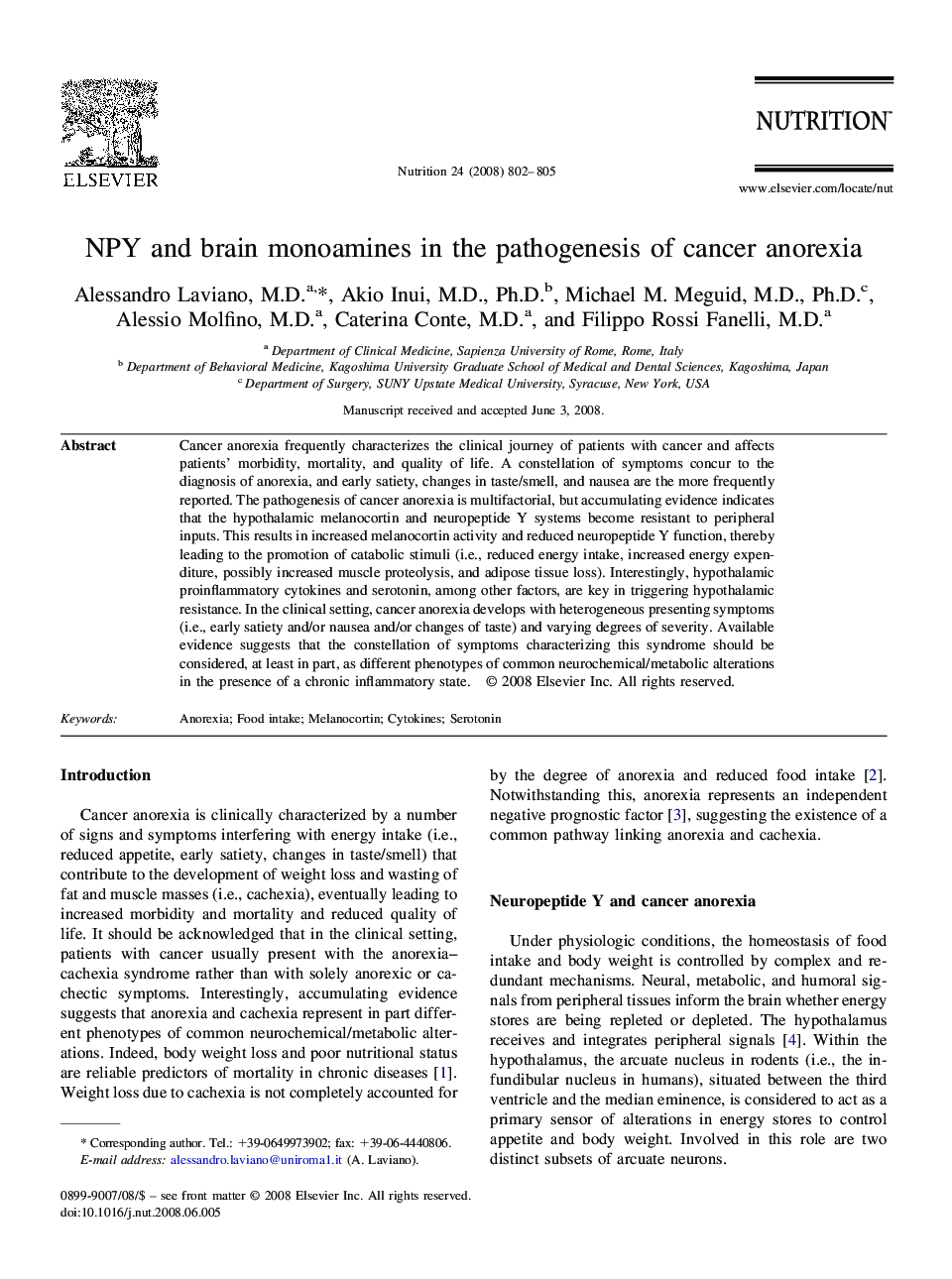| Article ID | Journal | Published Year | Pages | File Type |
|---|---|---|---|---|
| 6090645 | Nutrition | 2008 | 4 Pages |
Abstract
Cancer anorexia frequently characterizes the clinical journey of patients with cancer and affects patients' morbidity, mortality, and quality of life. A constellation of symptoms concur to the diagnosis of anorexia, and early satiety, changes in taste/smell, and nausea are the more frequently reported. The pathogenesis of cancer anorexia is multifactorial, but accumulating evidence indicates that the hypothalamic melanocortin and neuropeptide Y systems become resistant to peripheral inputs. This results in increased melanocortin activity and reduced neuropeptide Y function, thereby leading to the promotion of catabolic stimuli (i.e., reduced energy intake, increased energy expenditure, possibly increased muscle proteolysis, and adipose tissue loss). Interestingly, hypothalamic proinflammatory cytokines and serotonin, among other factors, are key in triggering hypothalamic resistance. In the clinical setting, cancer anorexia develops with heterogeneous presenting symptoms (i.e., early satiety and/or nausea and/or changes of taste) and varying degrees of severity. Available evidence suggests that the constellation of symptoms characterizing this syndrome should be considered, at least in part, as different phenotypes of common neurochemical/metabolic alterations in the presence of a chronic inflammatory state.
Related Topics
Health Sciences
Medicine and Dentistry
Endocrinology, Diabetes and Metabolism
Authors
Alessandro M.D., Akio M.D., Ph.D., Michael M. M.D., Ph.D., Alessio M.D., Caterina M.D., Filippo M.D.,
